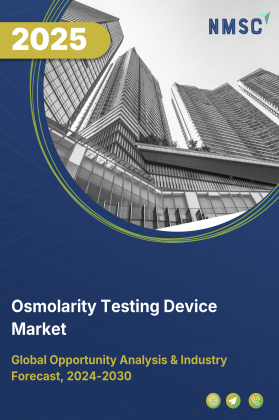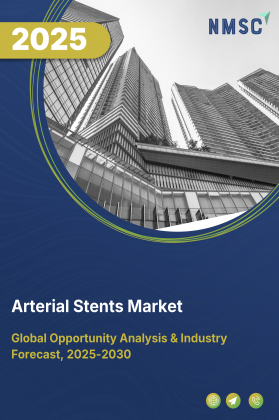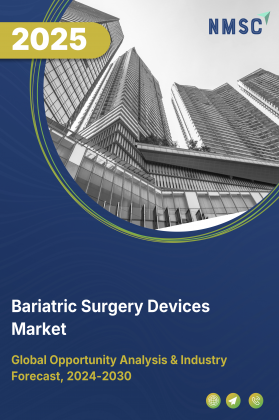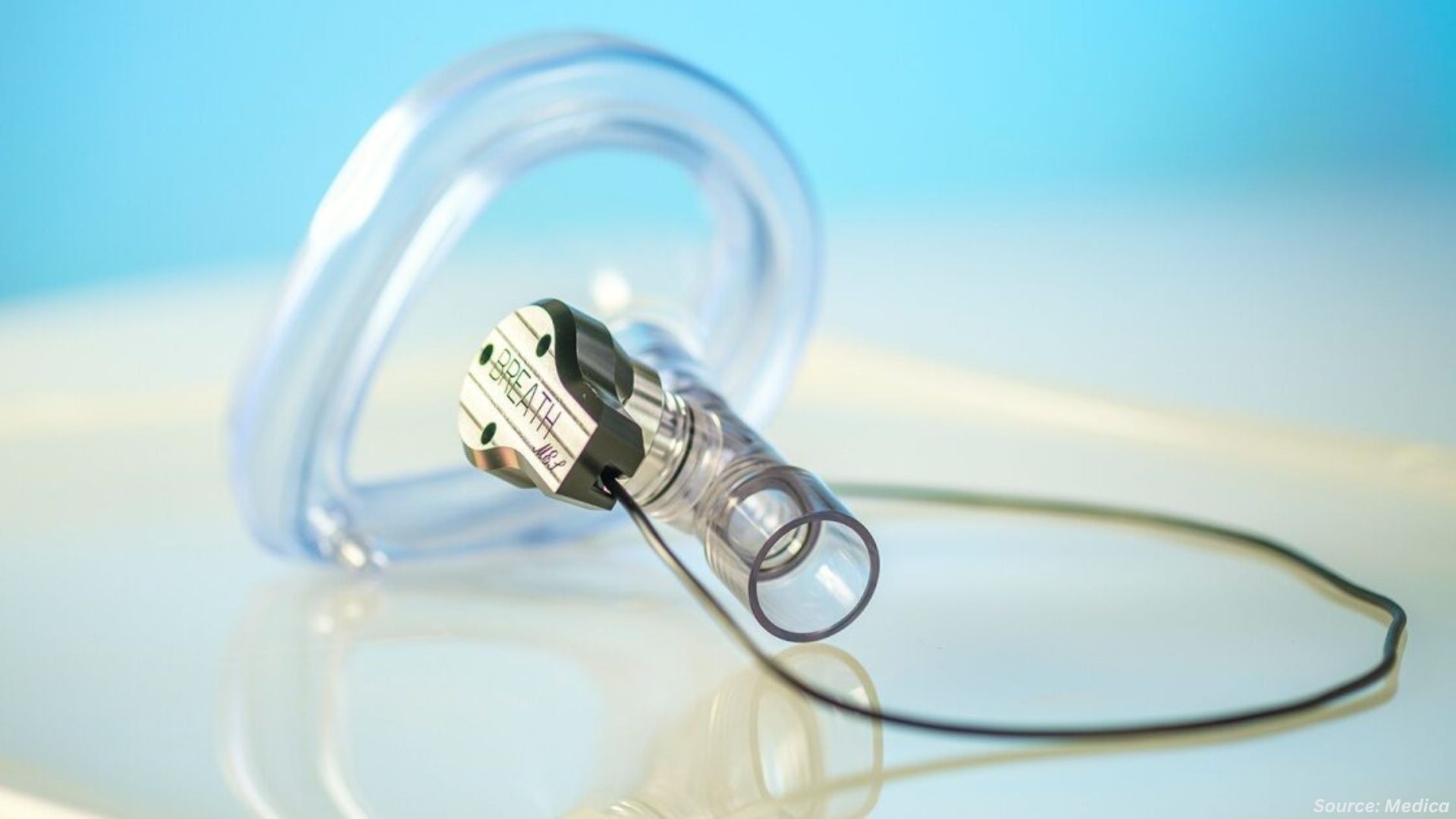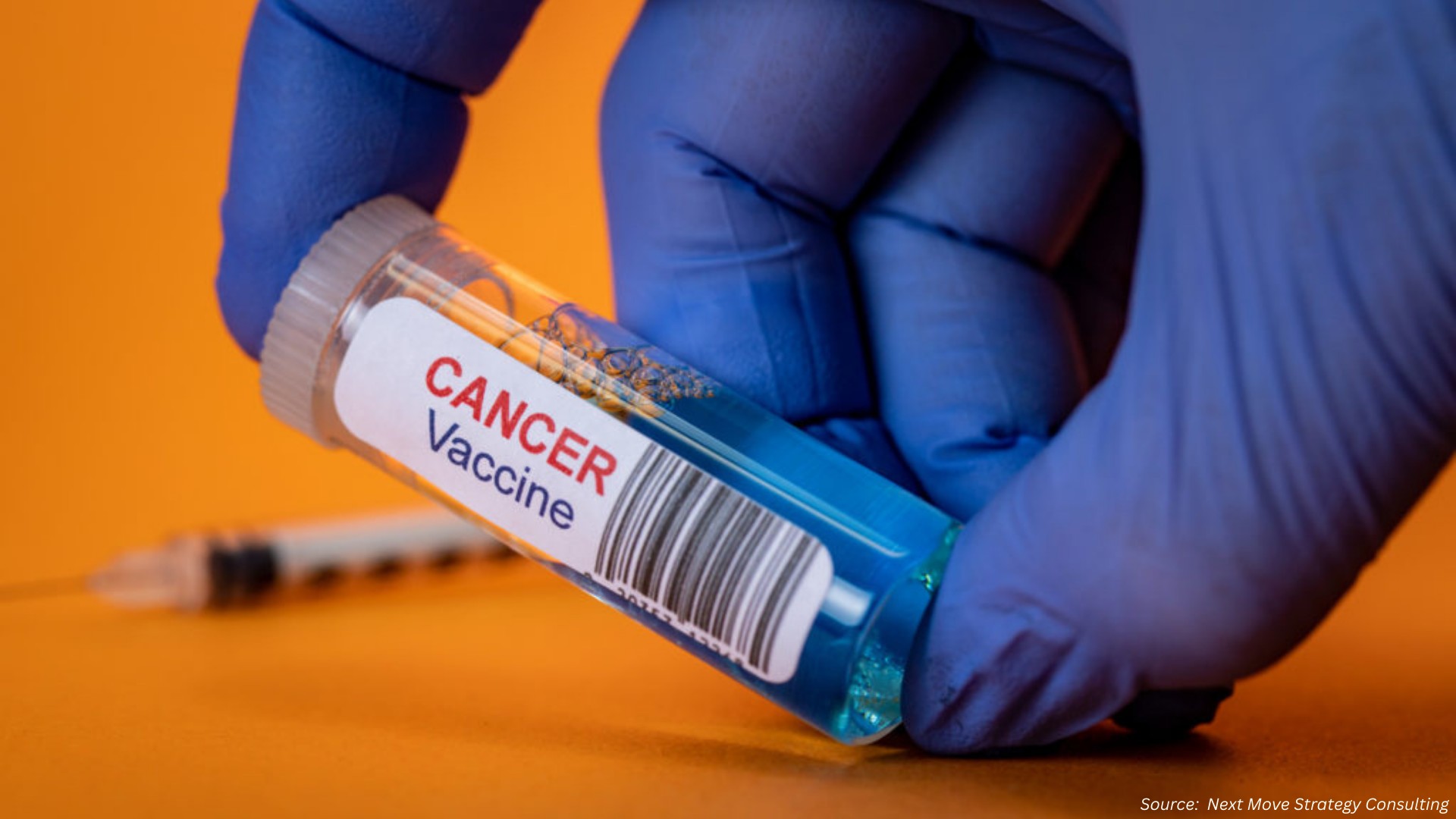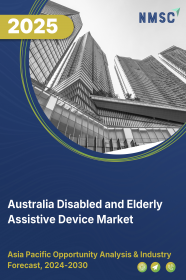
Australia Disabled and Elderly Assistive Device Market by Type (Mobility & Transfer Assistance, Hearing Impairments, Visual Impairments, and Daily Living & Personal Care), by End User (Home Care, Institutional Care, Community & Outpatient, and Other) – Opportunity Analysis and Industry Forecast, 2024 – 2030.
Industry: Healthcare | Publish Date: 21-Aug-2025 | No of Pages: 152 | No. of Tables: 116 | No. of Figures: 61 | Format: PDF | Report Code : HC1078
Australia Disabled & Elderly Assistive Device Market Overview
The Australia Disabled & Elderly Assistive Device Market size was valued at USD 720.4 million in 2023, and is predicted to reach USD 1730.9 million by 2030, at a CAGR of 12.2% from 2024 to 2030.
The disabled & elderly assistive device market refers to a wide range of products and services designed to support the aging population and individuals with disabilities in maintaining their autonomy and improving their quality of life. This market covers medical furniture, hearing aids, mobility aids and living aids, that are crucial for managing chronic conditions and ensuring safety.
Innovations in these areas are driven by the need to address the growing challenges of an aging population and the diverse requirements of individuals with disabilities, making this market integral to enhancing accessibility and wellbeing. This market is fueled by growing rate of disabled individuals, rapid technological advancements, and evolving regulatory landscapes, the assistive device industry prioritizes inclusivity and continuously adapts to meet the ever-changing needs of its diverse user base.
Robust Healthcare Expenditure Drives Demand in the Australia Disabled and Elderly Assistive Technology Market
Australia’s consistently high healthcare expenditure is a key driver of demand within the country’s disabled and elderly assistive technology market. A significant share of the national budget is dedicated to healthcare services, infrastructure, and innovation, ensuring that individuals with disabilities and the aging population have improved access to assistive technologies. This investment supports public health initiatives, aged care programs, and disability services that incorporate the use of mobility aids, hearing and vision solutions, and daily living support tools.
The government's financial commitment enables the broader integration of assistive technologies into hospitals, home care, and community-based services across Australia. Higher funding levels promote procurement, research, and adoption of advanced assistive solutions that are crucial for enhancing the quality of life, independence, and safety of older adults and people with disabilities. This favorable funding environment also helps improve affordability and availability for eligible Australians
Rising Disability Rates Fuel Demand in the Australia Disabled and Elderly Assistive Technology Market
The growing number of individuals living with disabilities in Australia is contributing to increased demand for assistive technologies. With a notable portion of the population experiencing physical, sensory, or cognitive impairments due to aging or chronic health conditions, there is a heightened need for tools that support daily functioning, mobility, and communication. This demographic trend underscores the importance of developing innovative solutions tailored to diverse user needs.
As the prevalence of disability continues to rise, so does the urgency to expand the reach and functionality of assistive devices across all regions of Australia. The market is responding with greater focus on user-centered design, adaptive technologies, and inclusive care models. This trend reinforces the role of assistive technologies as essential components of health and social support systems in the country.
High Costs Limit Accessibility in the Australia Disabled and Elderly Assistive Technology Market
Despite positive momentum, the high cost of assistive technologies remains a significant barrier in the Australia disabled and elderly assistive technology market. For individuals on fixed incomes or those not fully covered by public support schemes, the affordability of advanced assistive devices is often limited. This cost-related constraint affects both access to essential equipment and timely upgrades or replacements.
Economic disparities across different regions of Australia further impact access, especially in remote and rural communities where resources are more limited. While funding programs help offset expenses for some, the financial burden associated with high-cost devices continues to restrict market expansion and equitable adoption, highlighting the need for more cost-effective and scalable solutions.
Ai Integration Offers Growth Opportunities in the Australia Disabled and Elderly Assistive Technology Market
The integration of artificial intelligence (AI) into assistive technologies is opening up new opportunities for growth in the Australia disabled and elderly assistive technology market. AI-enabled devices can adapt to user behaviors, provide real-time feedback, and offer personalized support that enhances usability and efficiency. This technological shift is redefining how assistive solutions are developed and deployed across care settings.
By leveraging AI, assistive technologies in Australia are becoming more intuitive and interactive, enabling better health monitoring, predictive maintenance, and customized assistance. This innovation wave is helping to bridge existing service gaps, offering more responsive solutions that cater to a wide range of physical and cognitive needs. As the market evolves, AI is expected to remain a central force driving long-term advancement and accessibility.
Competitive Landscape
The promising players operating in Australia disabled & elderly assistive device industry includes Permobil Australia, Sunrise Medical Australia, Invacare Australia, Pride Mobility Australia, Drive DeVilbiss, Ottobock Australia, Cochlear Ltd., Sonova Australia, GN Hearing Australia, Starkey Australia, HumanWare, Vispero Australia, Tobii Dynavox Australia, AbleNet Inc., PRC‑Saltillo, and others.
Australia Disabled & Elderly Assistive Device Market Key Segments
By Type
-
Mobility & Transfer Assistance
-
Wheelchairs (manual, electric, specialty)
-
Walkers and Rollators
-
Canes and Walking Sticks
-
Crutches
-
Portable Ramps and lifts
-
Others
-
-
Hearing Impairments
-
Behind‑the‑ear & In‑the‑ear Hearing Aids
-
Assistive Listening (FM/DM) Systems
-
Deafblind communicators for hearing
-
-
Visual Impairments
-
Screen readers and magnifiers
-
Optical magnifiers
-
Smart glasses and wearables
-
Navigation aids
-
Braille writing equipment
-
Talking Devices
-
-
Daily Living & Personal Care
-
Bathroom safety equipment (grab bars, shower chairs)
-
Kitchen and dining aids
-
Bed and bedroom accessories
-
Personal hygiene devices
-
By End User
-
Home Care
-
Institutional Care
-
Hospitals & Clinics
-
Assisted‑Living & Nursing Homes
-
Rehabilitation & Day‑care Centers
-
-
Community & Outpatient
-
Other
Key Players
-
Permobil Australia
-
Sunrise Medical Australia
-
Invacare Australia
-
Pride Mobility Australia
-
Drive DeVilbiss
-
Ottobock Australia
-
Cochlear Ltd.
-
Sonova Australia
-
GN Hearing Australia
-
Starkey Australia
-
HumanWare
-
Vispero Australia
-
Tobii Dynavox Australia
-
AbleNet Inc.
-
PRC‑Saltillo
REPORT SCOPE AND SEGMENTATION:
|
Parameters |
Details |
|
Market Size Value in 2023 |
USD 720.4 million |
|
Revenue Forecast in 2030 |
USD 1730.9 million |
|
Value Growth Rate |
CAGR of 12.2% from 2024 to 2030 |
|
Analysis Period |
2023–2030 |
|
Base Year Considered |
2023 |
|
Forecast Period |
2024–2030 |
|
Market Size Estimation |
Million (USD) |
|
Growth Factors |
|
|
Companies Profiled |
15 |
|
Customization Scope |
Free customization (equivalent up to 80 working hours of analysts) after purchase. Addition or alteration to country, regional, and segment scope. |
|
Pricing and Purchase Options |
Avail customized purchase options to meet your exact research needs. |

















 Speak to Our Analyst
Speak to Our Analyst



